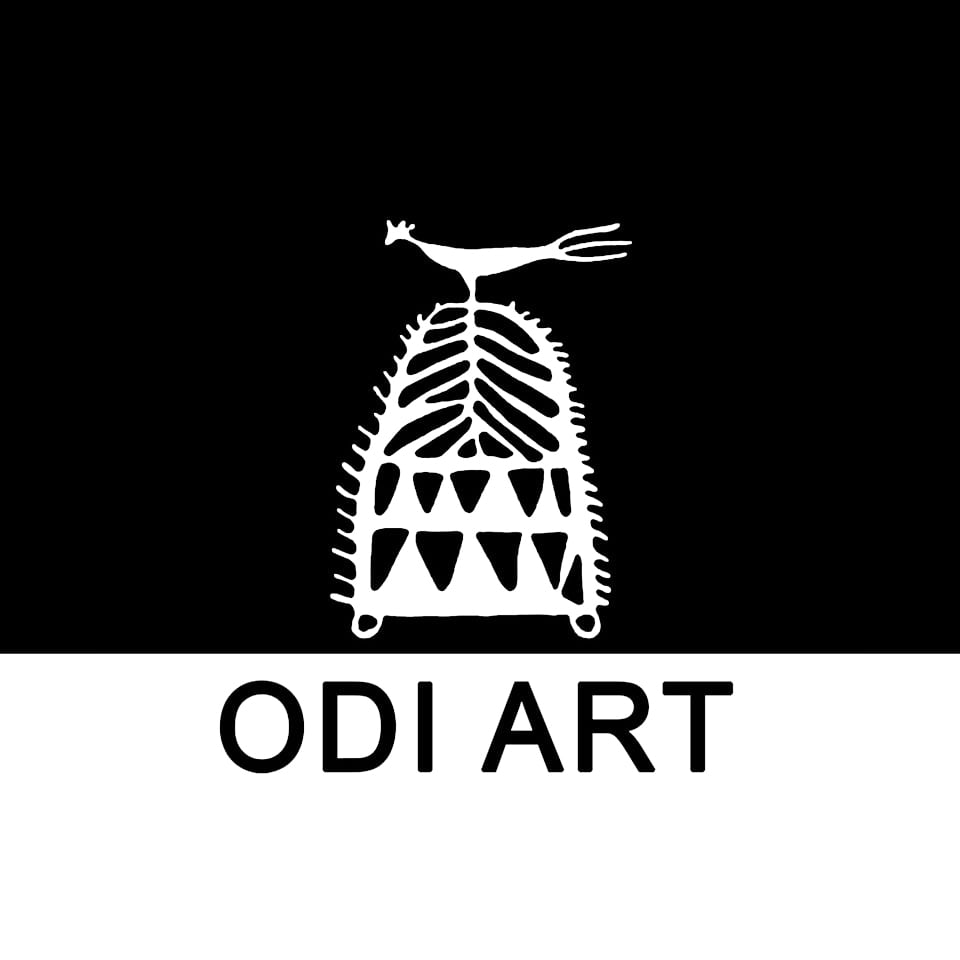Osakothi Painting: Divine Murals of Ganjam
Osakothi painting, a revered tradition observed during the Thakurani Jatra of Ganjam, embodies the spiritual fervour and artistic excellence of the region. Stemming from the union of ‘osha’ meaning penance and ‘kothi’ meaning house, Osakothi refers to the sanctified abode where Goddesses (Thakurani) reside.
Materials
Executed on cloth or patta using natural dust colors, Osakothi paintings exude a mystical allure with their depictions of various goddesses such as Durga, Kali, Chhinamasta, and Mangala adorning the sacred spaces.
Types
Two distinct styles, Raghurajpur Osakothi and Ganjam Osakothi, exemplify the diversity within this art form, each bearing the regional nuances and cultural motifs unique to its locale. Gallery -2 (Kalijai Gallery)
Palmleaf Paintings (Pothichitra)
Palmleaf paintings, known as Pothichitra, embody the unique artistic tradition of Odisha, where intricate illustrations are engraved on the surface of palm leaves. These Pothichitra paintings are meticulously crafted by artists who etch Sanskrit and Odia texts onto palm leaves using an iron stylus. Richly illustrated with scenes from the Mahabharata, Ramayana, and depictions of various mythological figures such as the Dasavatar, Jagannath, Balabhadra, and Subhadra, these artworks serve as a visual narrative of Odisha’s cultural heritage.
Origin
Originating from Odisha, this art form emerged as professional artists intricately combined imagery with textual content on palm leaves, preserving and propagating the cultural narratives of the region for generations to come.
Materials
Crafted using dry palm leaves and natural pigments like turmeric powder, each Pothichitra painting embodies the essence of Odisha’s artistic heritage.
Types
1. Engravings without the application of color
2. Engravings with the application of a single color, such as carbon black or turmeric
3. Engravings/drawings with multiple colors
4. PothiChitra with multiple layers of leaves, creating a layered effect to showcase scenes or reveal additional drawings behind windows.
Ganjapa,Oshakothi and Palmleaf
Ganjapa cards are intricately crafted cards, adorned with vibrant illustrations, serve as more than just a source of entertainment; they are windows into Odisha’s rich heritage, reflecting its history, artistry, and spiritual beliefs. Furthermore, the act of playing Ganjapa fosters social cohesion, bringing communities together for shared moments of leisure and camaraderie.
Origin
The origins of Ganjapa cards in Odisha can be traced back to the 16th century, believed to have arrived during the Mughal rule. It is speculated that the term ‘Ganjapa’ originated from the Persian word “Ganjipha,” meaning card game. Over time, Ganjapa evolved into a cherished pastime, with each region in Odisha developing its unique variations, such as Raghurajpur Ganjapa, Sonepur Ganjapa, and Ganjam Ganjapa.
Artistic Expression
Skilled artisans meticulously hand-paint intricate designs on circular Patta, measuring 64-68 millimeters in diameter. These designs often depict various themes, including the ten incarnations, deities like Ganesha, Kartik, Shiva, Brahma, Indra, and Yama, conch, wheel and elements of nature.
Rules of Ganjapa Game
Ganjapa cards are played with four-colour (Chari Rangi), eight-colour (Aatha Rangi), twelve-colour (Baar Rangi), Fourteen-colour (Chouda Rangi) and sixteen-colour (Shola Rangi). Each colour has 12 cards, which makes four-color card set to have 48 cards, eight-colour card set to have 96 cards and similarly the number of colours is found in multiples of twelve cards. Each suit has ten numbered cards depending on the number of images on it, a king and a wazir (high official). For example, four conches on the card means number four. The king has the highest value, followed by wazir and then comes the numbered cards, whose value depends on their numerical value in descending order. The king’s card is painted with a king siting in a knee folded position (Chauka Madi basa) and wazir’s cards is seen with the official in standing position. The king is often seen on a chariot and the minister is seen on a horse. If a player can’t follow suit, the leading player names another suit, and they must discard their highest card in that suit. If they don’t have any cards in that suit, they may discard any other card.
